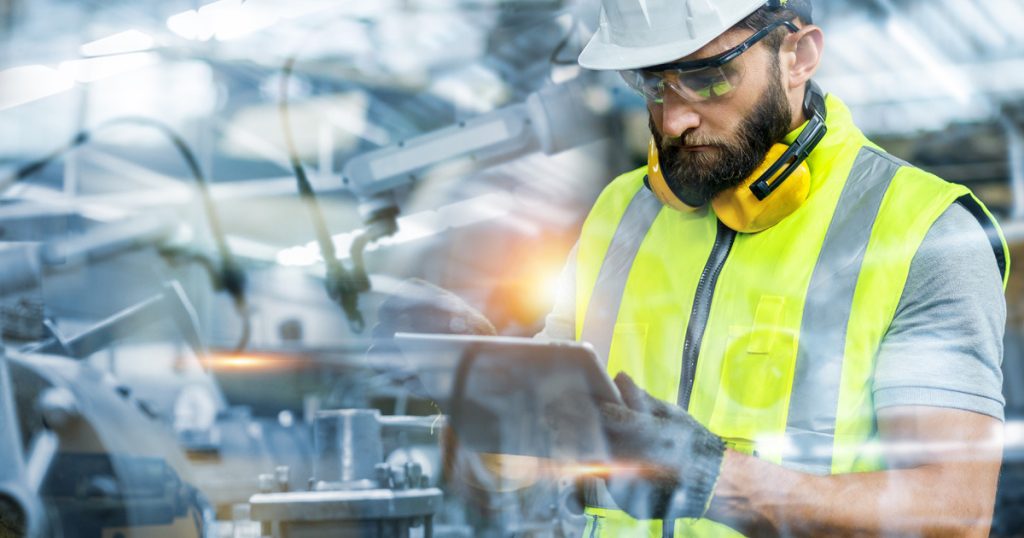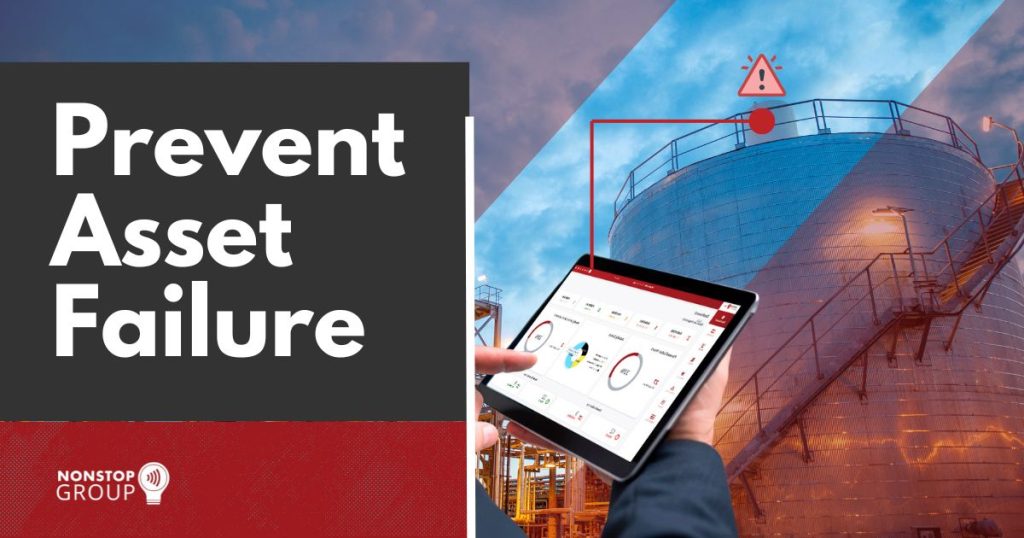6 Min Read

In the relentless pursuit of operational excellence, asset failure presents a significant, yet often underestimated, threat. From unexpected downtime to costly repairs, equipment breakdowns disrupt workflows and erode profitability.
However, your organization can prevent these costly disruptions while ensuring optimal performance. This shift in paradigm is possible by understanding the common causes of asset failure and taking a proactive approach.
This blog post delves into the key factors contributing to asset failure, empowering your organization to implement preventative strategies that safeguard your operation’s success. Let’s dig in!
What are The Risks of Asset Failure?

Assets, be they physical equipment or digital infrastructure, are fundamental to any operation. However, unforeseen malfunctions, known as asset failures, can trigger a cascade of negative consequences that impact efficiency, safety, and finances.
Detailed below are the four key risks associated with asset failure:
Increased Downtime and Lost Productivity
Asset failure often leads to unplanned downtime, halting operations and causing significant productivity losses. When machinery or equipment breaks down, work stops until repairs are made. This downtime results in delays and potential missed deadlines. Moreover, the interruption caused by asset failure not only affects production schedules but can also lead to a backlog of work, putting additional strain on resources.
Safety Risks and Potential Injuries
Faulty equipment poses serious safety risks to employees. Depending on the nature of the asset, a malfunction can lead to accidents, resulting in injuries or even fatalities. Ensuring that assets are in good working condition is critical to maintaining a safe working environment. Regular maintenance and inspections help identify potential hazards before they result in harmful incidents. Consequently, protecting both workers and the company from costly liabilities.
PRO TIP: Simplify Compliance Management Stay on top of industry regulations and internal protocols with The NonStop Suite. Our comprehensive suite done and when simplifies document management and ensures your organization’s maintenance practices adhere to the latest safety standards. Integrate this Computerized Maintenance Management System (CMMS) asset management software in the maintenance strategy to prevent asset failure and ensure workplace safety. |
Repair Costs and Potential for Replacement
The financial repercussions of asset breakdowns can be substantial. Repairing a malfunctioning asset often incurs unforeseen costs. In extreme cases, the damage may be so severe that complete replacement becomes necessary, leading to even greater financial burdens. These unplanned expenses can strain budgets and affect the financial health of the organization.
Reduced Asset Lifespan
Frequent breakdowns and repairs can significantly shorten an asset’s lifespan. Assets are designed to function for a specific period. Breakdowns and malfunctions place undue stress on the system, accelerating wear and tear. This not only increases maintenance needs but also necessitates earlier replacements, disrupting operational continuity. Ultimately increasing capital expenditure.
PRO TIP: Streamline Maintenance Workflows The NonStop Suite goes beyond basic maintenance. Gain valuable insights from real-time asset performance data to identify usage trends and predict potential issues before they occur. Moreover, The NonStop Suite simplifies maintenance by offering a centralized platform for scheduling, assigning, and tracking tasks. Hence, the maintenance team always knows what needs to be done and when to keep the assets running smoothly. |
Smarter Asset Tracking With NFC Tags
Learn more about how NonStop Suite's NFC Asset Tracking Solution can help your Enterprise streamline operations to new heights.
Get A Free Product Tour
What are The Common Causes of Equipment Failure?

Assets, from machinery to buildings, are crucial for any operation. However, even the sturdiest asset can fail. Understanding the root cause behind the asset failures can help in developing effective strategies to prevent breakdowns and ensure the longevity and reliability of assets.
Here are some of the five most common reasons for asset failure and how to prevent them:
- Design and Manufacturing Flaws: Some assets are inherently predisposed to failure due to design and manufacturing flaws. These weaknesses can manifest over time, leading to unexpected breakdowns. Ensuring quality control and choosing reputablemanufacturers can mitigate this risk.
- Lack of Maintenance: Neglecting regularmaintenance schedules is a common cause of asset failure. Routine checks and servicing are crucial to identify and rectify minor issues before they escalate into major problems. Maintenance should be a top priority to keep assets running smoothly.
- Age and Wear:All assets degrade over time due to natural wear and tear. Recognizing the signs of aging and implementing appropriate measures to address them is essential in maintaining asset health.
- Improper Use and Operation: User training is crucial in preventing asset failure. Misuse or improper operation of equipment can lead to accelerated wear and tear or sudden breakdowns. Adhering to operational guidelines and ensuring all users are adequately trained is essential.
- Environmental Factors: External factors such as temperature, humidity, and exposure to harsh conditions can significantly impact the performance and longevity of assets. Ensuring that equipment is operated within its specified environmental conditions can prevent premature failure.
PRO TIP: Boost Workforce Collaboration Empower your organization’s maintenance team with The NonStop Suite’s intuitive interface and actionable data and maintenance history. The asset management solution’s real-time continuous monitoring and predictive analytics provide early warnings of potential failures, enabling the staff to take timely corrective maintenance actions. Enhance decision-making and maintain peak operational efficiency effortlessly. |
How Can You Prevent Equipment Failure?

Keeping equipment running smoothly is vital for any organization’s operation. Let’s explore proactive strategies to prevent equipment failure and maximize its lifespan:
Preventive Maintenance: Stopping Problems Before They Start
Equipment failure can disrupt operations and cost a lot to fix. The good news is that most failures can be prevented through proactive maintenance. Preventive maintenance is a key component, which differs from reactive maintenance in that it is scheduled based on time or usage rather than performed after a failure. It entails regular inspections and servicing based on manufacturer recommendations and how the equipment is utilized. This proactive approach catches problems early, minimizes unexpected downtime, and extends the life of assets. As a result, businesses can avoid costly repairs and keep maintenance activities running smoothly, ensuring that machinery and equipment perform efficiently and reliably.
Reliability-Centered Maintenance (RCM): A Customized Approach
Reliability-Centered Maintenance (RCM) is a systematic approach focused on maintaining the reliability of assets. It entails analyzing the functions and potential failures of equipment to develop maintenance strategies that ensure operational safety and efficiency. With the RCM strategy, organizations prioritize maintenance tasks based on the criticality and impact of potential failures and ensure that resources are used effectively. This approach helps in identifying the most important facility maintenance activities to prevent failures, optimize maintenance schedules, and enhance the overall reliability of assets. Ultimately, leading to improved performance and reduced maintenance costs.
Condition-Based Maintenance (CBM): Using Data for Smarter Decisions
Condition-Based Maintenance (CBM) is an advanced form of routine and preventive maintenance that relies on real-time data and sensors to monitor the condition of equipment. Unlike traditional preventive maintenance which sometimes carries out too much maintenance, the CBM schedules maintenance tasks based on the actual condition of the asset, rather than a predetermined timeline. By using data analysis, CBM program identifies early signs of wear and tear. This tactic allows maintenance to be performed only when necessary. Moreover, CBM maximizes the lifespan of assets, reduces unnecessary maintenance costs, and ensures that equipment is serviced precisely when needed.
Predictive Maintenance: The Future of Uptime
Predictive Maintenance is a data-driven approach to preventing equipment failures. It uses advanced analytics, including machine learning and historical data, to predict when an asset is likely to fail. By identifying potential issues before they occur, predictive maintenance allows for proactive interventions that prevent breakdowns. This approach maximizes asset uptime, optimizes maintenance resources, and minimizes the likelihood of unexpected failures. Predictive maintenance program ensures that maintenance operations are carried out at the most opportune times. Consequently, enhancing the reliability and longevity of equipment while reducing overall maintenance costs.
PRO TIP: Leverage Smart NFC Asset Tags to Prevent Asset Failure Transform your company’s asset management approach with The NonStop Suite. Its cutting-edge technology and Smart NFC asset tagging feature integrate seamlessly with existing systems, offering a holistic view of your asset health. By prioritizing preventive maintenance, your organization can minimize disruption, optimize resource allocation, and ensure smooth operations. |
The NonStop Advantage: Prevent Asset Failure & Boost Profitability

Asset failure is not an inevitability but a preventable threat. By embracing a proactive approach, organizations can transform their maintenance strategies from reactive firefighting to strategic asset management.
To help your organization in this endeavor, The NonStop Group presents The NonStop Suite—a comprehensive suite of features that empowers your organization to take control of asset maintenance management!
From Dynamic eForms, Smart NFC asset tagging system, and on-the-go Asset management to data-driven insights, GxP & ISO Compliance, and NC-CAPA Capabilities, The NonStop Suite is the one-stop solution to prevent asset failure. With this digital solution, your organization can anticipate equipment issues, optimize resource allocation, and maximize asset lifespan. In simple terms, The NonStop Suite’s integration into your maintenance strategy eliminates the silent threat of asset failure to disrupt critical operations.
Should your organization want to prevent asset failures, consult The NonStop Group today. Book a FREE personalized product tour and unlock a future of operational resilience and peak performance.

